 Democratic People’s Republic of Korea (2020)
Democratic People’s Republic of Korea (2020)
Main Battle Tank – At Least 9 Built, Probably More
10th October 2020 marked the 75th Anniversary of the foundation of the Workers’ Party of Korea (WPK), the far-left party of the totalitarian one-party Democratic People’s Republic of Korea (DPRK). This took place in Pyongyang, the North Korean capital, through Kim Il-sung Street. During this parade, new and very powerful nuclear Intercontinental Ballistic Missiles (ICBM), which shocked the North Korean population and the whole world, as well as a new Main Battle Tank (MBT) that has intrigued many military analysts, have been shown for the first time, arousing great interest.
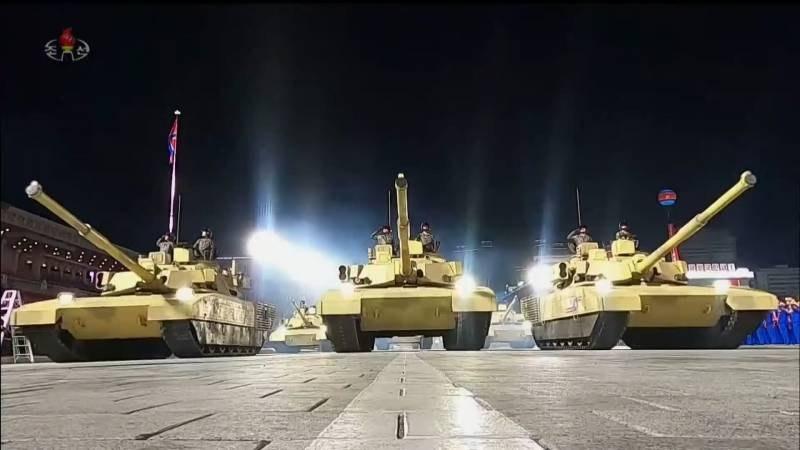
Development
Unfortunately, not much is known about this vehicle yet. The Chosŏn-inmin’gun, or Korean People’s Army (KPA), has not yet officially presented the new tank or given a precise name, as it does for each vehicle of its arsenal due to the North Korean strategy of not revealing any details about their military equipment. Thus, throughout this article, the vehicle will be referred to as “New North Korean MBT”.
However, it is an almost completely new design that seems to have very little in common with previous MBTs developed in North Korea. It is also the first vehicle developed after the Songun-Ho was presented in a parade, in the same place, in 2010.
North Korean tanks
In the very last phases of the Second World War, between August and September 1945, Iosif Stalin’s Soviet Union occupied, in agreement with the United States, the northern part of the Korean peninsula, going as far down as the 38th parallel.
Because of the Soviet occupation, which lasted for three years and three months, the charismatic Kim Il-sung, who had been a guerrilla fighter against the Japanese during the occupation of Korea in the ’30s, and then continued to fight the Japanese during their invasion of China, became captain of the Red Army in 1941, and, with this title, in September 1945, he entered Pyongyang.
Under his leadership, the newly formed country quickly broke off all relations with South Korea, under U.S. control, and became increasingly close to the two communist superpowers, the Soviet Union and the newly formed People’s Republic of China, which had recently ended its bloody civil war.
Most of the North Korean military’s early equipment was of Soviet origin, with thousands of weapons and ammunition and hundreds of T-34/76s, T-34/85s, SU-76s and IS-2s and Soviet-made aircraft arriving in North Korea.
The outbreak of the Korean War, which lasted from June 1950 to July 1953, completely broke any relationship with South Korea, pushing North Korea to become even closer to the two communist regimes, even if, after Stalin’s death, the ties with the Soviet Union began to deteriorate.
The Kim family’s MBTs
In the following years, North Korean armored formations’s core of T-34s started being largely supplemented by T-54 and T-55s. In the case of the T-55, as well as the PT-76, local assembly at least, if not full production, was initiated in North Korea from the late 1960s onward, giving a head start to the country’s armored vehicles industry. Bolstered by those Soviet deliveries, as well as Type 59, 62 and 63 from China, North Korea built a large armored force from the 1960s and 1970s onward.
Towards the late 1970s, North Korea began the production of its first “indegenous” main battle tank. The first tank produced by the North Korean nation was the Ch’ŏnma-ho (Eng: Pegasus), which started as a mere T-62 copy with minor and obscure modifications. Interestingly enough, despite some rumors of the contrary, North Korea is not known to have acquired any significant number of T-62s from abroad.
The Ch’ŏnma-ho went through a large number of evolutions and versions from its introduction to this day; in the west, those are often rationalized under the designations of I, II, III, IV, V and VI, but in truth those are nebulous, with quite a lot more than six configurations and variants existing (for example, both the Ch’ŏnma-ho 98 and Ch’ŏnma-ho 214 could be described as Ch’ŏnma-ho V, while on the other hand the vehicle described as the Ch’ŏnma-ho III has never been photographed and is not actually known to exist).
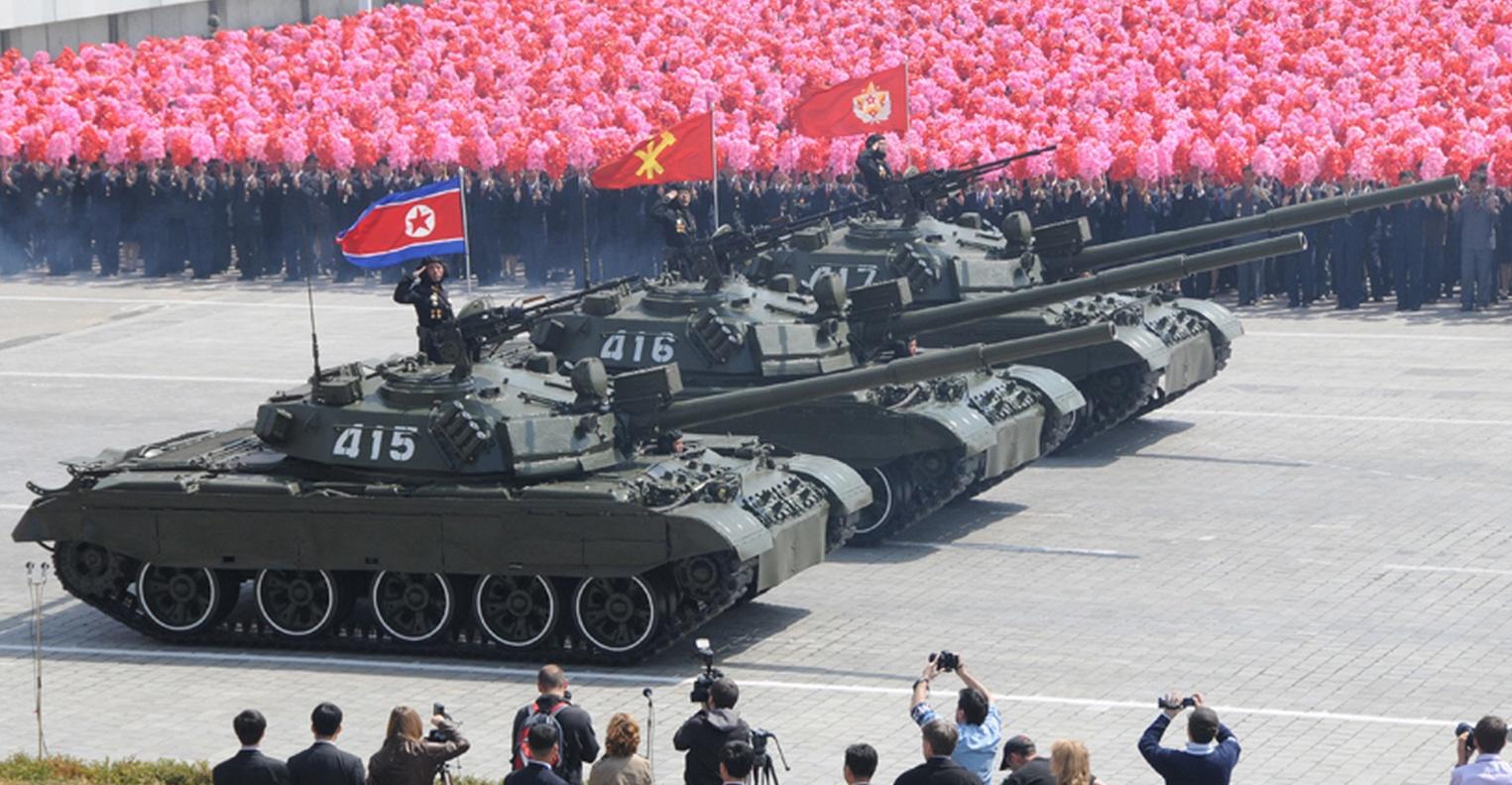
The Ch’ŏnma-ho have been in service since the last years of the 1970s, and while the obscure nature of North Korea means an estimation of their numbers is hard to come by, the tanks have obviously been produced in very large numbers (with some early models even being exported to Ethiopia and Iran) and have formed the backbone of North Korea’s armored force in the last decades. They have known considerable evolutions, which have often confused enthusiasts; the most notable example of this being the so-called “P’okp’ung-ho”, in fact the later models of the Ch’ŏnma-ho (215 and 216, first observed around 2002, which has led them to sometimes be called “M2002” as well), which, despite having added another roadwheel and numerous new internal and external components, remains Ch’ŏnma-hos. This has lead to considerable confusion when North Korea actually introduced a tank that was mostly new, the Songun-Ho, first seen in 2010, which featured a large cast turret with a 125 mm gun (whereas late Ch’ŏnma-hos had adopted welded turrets which appear to have mostly retained 115 mm guns) and a new hull with a central driving position. It ought to be noted that the later models of the Ch’ŏnma-ho as well as the Songun-Ho are often seen with additional, turret-mounted armaments; anti-tank guided missiles such as the Bulsae-3, light anti-aircraft missiles, such as locally-produced variants of the Igla, 14.5 mm KPV machine-guns, and even dual 30 mm automatic grenade launchers.
All of these vehicles have a clear visual, design and technological descendance from Soviet-style vehicles; it ought to be noted, however, that particularly in the last twenty years, the North Koreans vehicles have evolved quite considerably from their roots, and can hardly be called mere copies of vintage Soviet armor anymore.
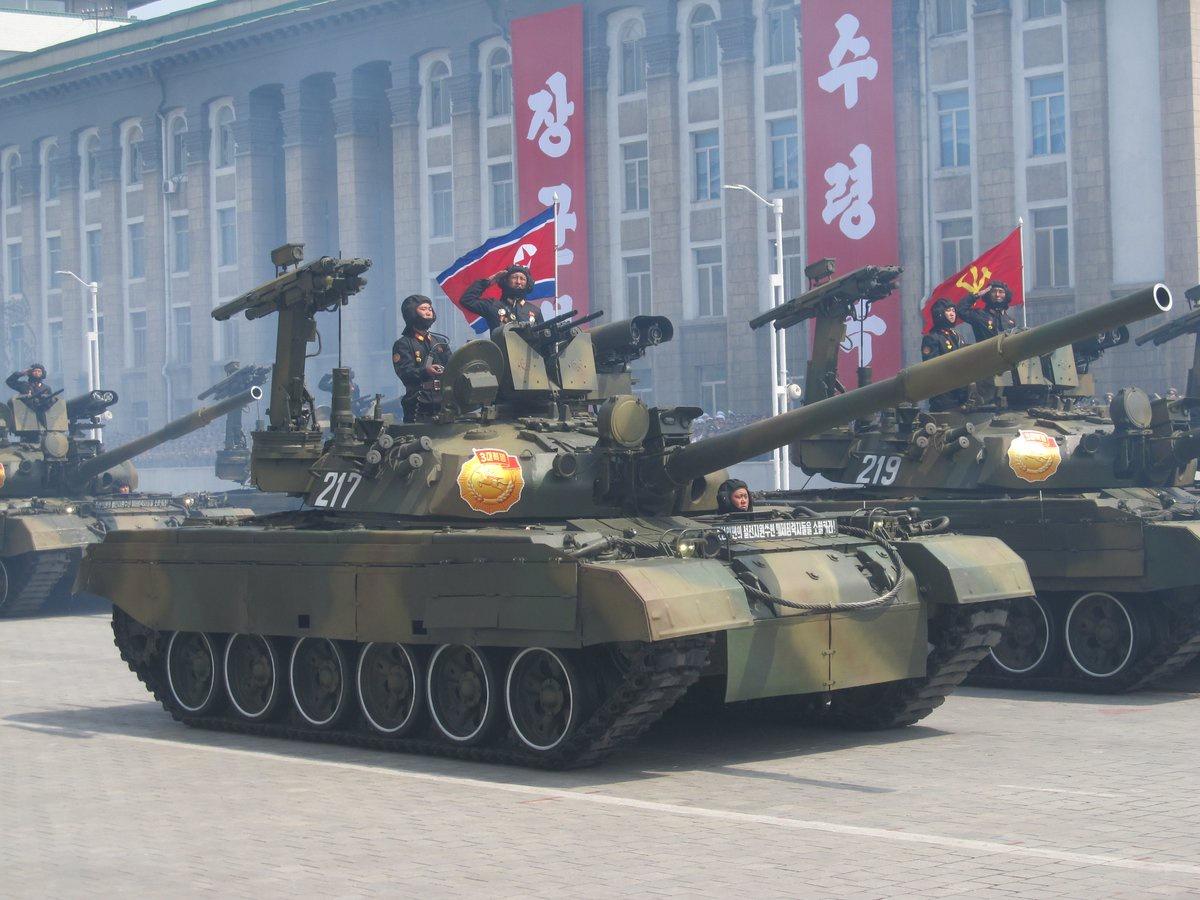
Design of Kim’s new tank
The layout of the new North Korean MBT is, at first glance, reminiscent of standard Western MBTs, deviating significantly from previous tanks produced in North Korea. These older vehicles have obvious similarities to Soviet or Chinese tanks from which they are derived, such as the T-62 and T-72. In general, these tanks are of a smaller size compared to Western MBTs, designed above else to contain costs and for rapid transport by rail or air, while NATO MBTs are, as a rule, more expensive and larger providing a greater comfort to the crew.
The three-tone light sand, yellow, and light brown camouflage is also very unusual for a North Korean vehicle, reminding of the camouflage patterns used on armored vehicles during Operation Desert Storm in 1990. Recently, North Korean armor has had standard one tone camouflage of a shade really similar to the Russian one and a three camouflage, brown and khaki on a green base.
Analyzing the vehicle in detail, however, shows that, in reality, not all is what it seems.
Hull
The hull of the new tank is completely different from previous North Korean MBTs and is very similar to the modern Russian T-14 Armata MBT presented for the first time during the parade for the 70th anniversary of the victory of the Great Patriotic War on 9th May 2015.
The driver is placed centrally at the front of the hull, and has a pivoting hatch with two episcopes.
The running gear is composed, as on the T-14, of seven large diameter road wheels protected not only by usual side skirts, but also by a polymer skirt (the black one that can be seen in the picture), both present in the Armata. On the North Korean tank, the polymer skirt almost completely covers the wheels, obscuring most of the running gear.
As on nearly all the modern MBTs, the sprocket wheel is at the rear, while the idler is at the front.
The tracks are of new style for a North Korean tank. In fact, they seem to be a double pin rubber padded type of western derivation, whereas in the past, these single-pin tracks with rubber-bushed pins like the Soviet and Chinese ones.
The rear of the hull is protected by slat-armor. This type of armor, which protects the sides of the engine compartment, is often used on modern military vehicles and is effective against infantry anti-tank weapons with HEAT (High-Explosive Anti-Tank) warheads that have piezo-electric fusing, such as the RPG-7.
On the left side, the slat-armor has a hole to access the muffler, just like on the T-14. The only difference between the two tanks’ slat-armor is that, on the T-14, there are two mufflers, one on each side.
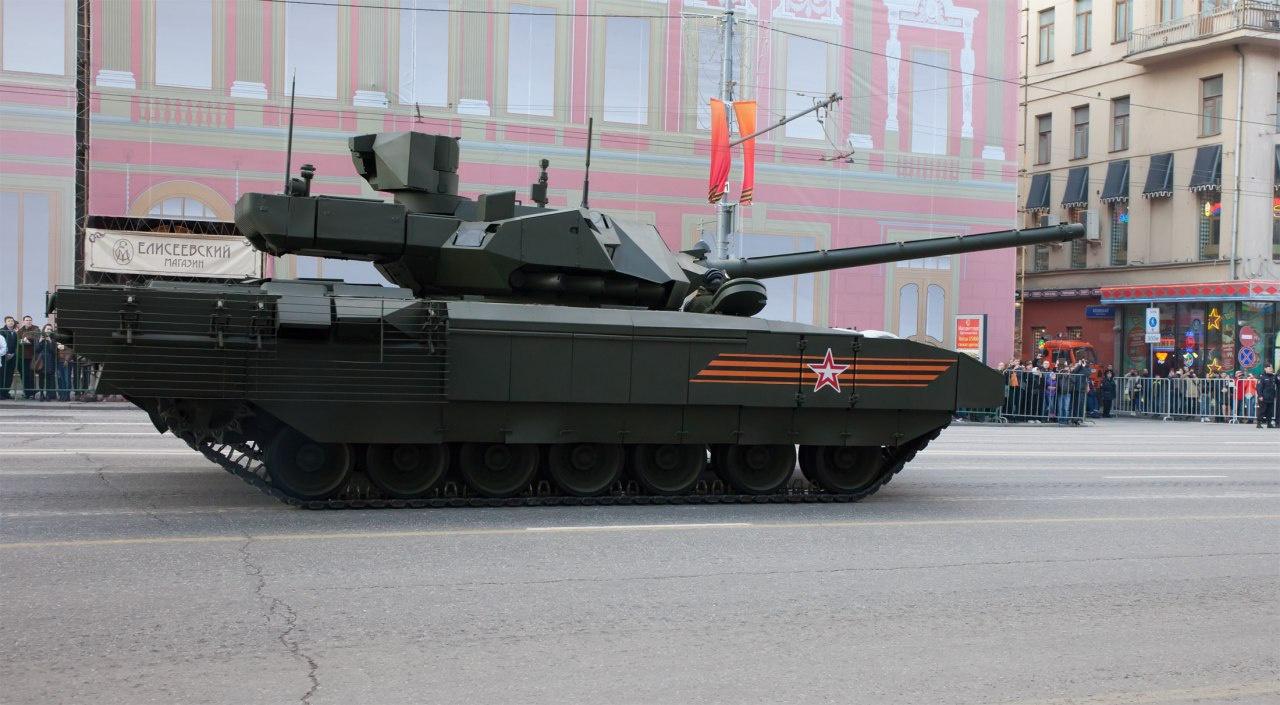
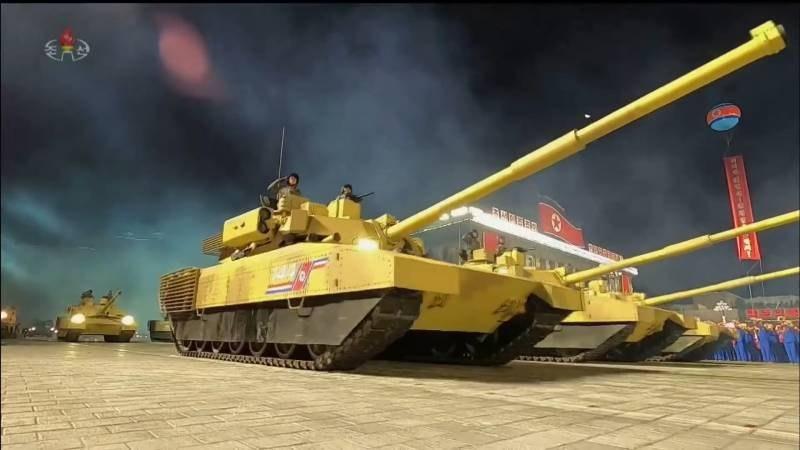
In the parade videos, at a certain point, one of the vehicles passes over a camera and it can be seen that the vehicle has torsion bar suspension.
The rear of the vehicle also reminds of the T-14 one, being higher than the front. This was probably done to increase the space available in the engine bay, probably in order to house an upgraded version of the 12-cylinders P’okp’ung-ho engine delivering, according to estimates from 1000 to 1200 hp.
Obviously, specifications such as maximum speed, range, or weight of the new MBT are unknown.
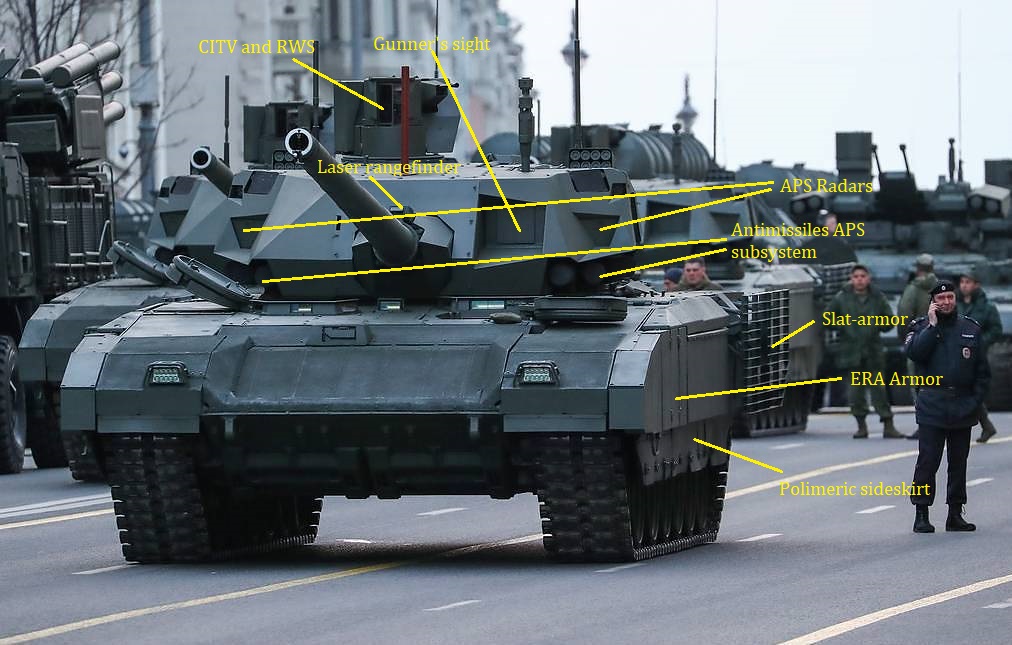
Turret
If the hull, in its shape, reminds the T-14 Armata, the most modern MBT in the Russian Army, the turret vaguely reminds of that of the M1 Abrams, the standard MBT of the U.S. Army or the Chinese MBT-3000 export tank, also known as the VT-4.
Structurally, the turret is very different from that of an Abrams. In fact, the lower part of the turret has four holes for some grenade launcher tubes.
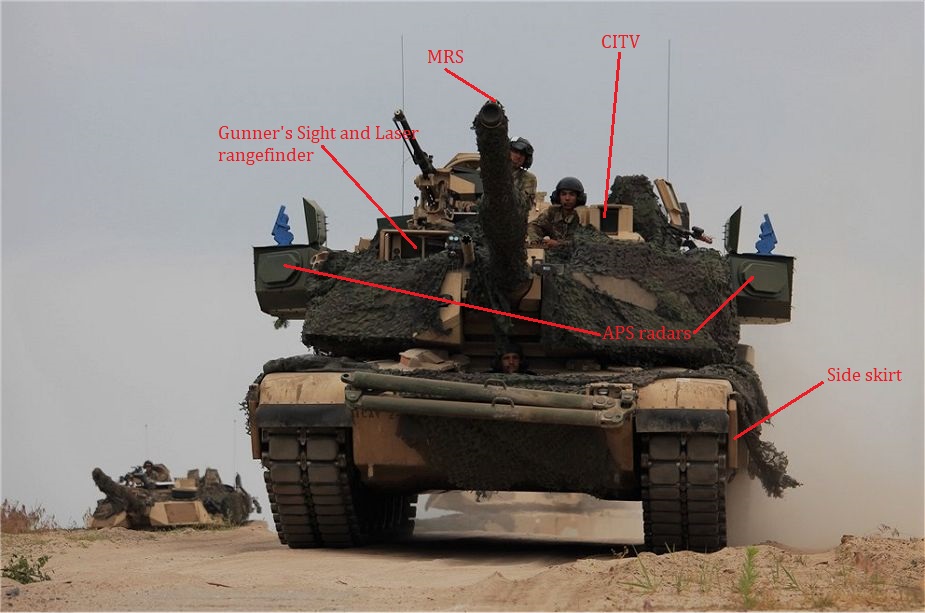
It can therefore be assumed that the turret is made of welded iron and equipped with composite spaced armor mounted on it, as on many modern MBTs (for example the Merkava IV or Leopard 2). Consequently, its internal structure is different from the external appearance. The armor of some modern tanks, such as the M1 Abrams and Challenger 2, is made of composite materials that cannot be removed.
A detail that hints at this is the evident step that is visible between the sloped armor at the front and the roof, where there are the two cupolas for the vehicle commander and the loader.
On the right side of the turret is mounted a support for two missile launcher tubes. These can probably fire a copy of the 9M133 Kornet Russian Anti-Tank missiles or some anti-aircraft missile.
On the roof of the turret, there is what looks like a Commander’s Independent Thermal Viewer (CITV) on the right, in front of the commander’s cupola, a Gunner’s Sight just below it, a Remote Weapon System (RWS) armed with an automatic grenade launcher in the center and, on the left, another cupola with a fixed front episcope.
Above the cannon is a laser rangefinder, already present in that position on previous North Korean vehicles. On its left is what looks like a night vision camera.
There is also another fixed episcope on the right of the commander’s cupola, an anemometer, a radio antenna on the right and, on the left side, what may look like a cross-wind sensor.
On the rear, there is a space to put the crew’s gear or something else that covers the sides and rear of the turret and four smoke launchers for each side. On the rear and on the sides are three hooks to lift the turret.
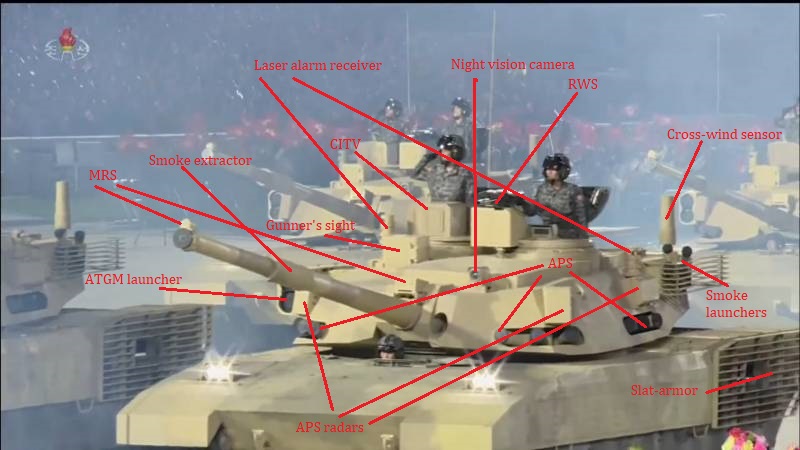
Armament
We can deduce that the main armament is, like in the case of the Songun-Ho, the North Korean copy of the 125 mm Russian 2A46 tank gun and not the 115 mm North Korean copy of the Soviet 115 mm 2A20 cannon. The dimensions are obviously larger and it is also unlikely that the North Koreans would have mounted an older generation cannon on what appears to be such a technologically advanced vehicle.
From the photos, we can also logically assume that the cannon is not capable of firing ATGMs (Anti-Tank Guided Missiles), which Russian 125 mm guns can do, because the vehicle is equipped with an external missile launcher.
On the barrel of the gun, in addition to the smoke extractor, like on the C1 Ariete or the M1 Abrams, is mounted an MRS (Muzzle Reference System) that constantly verifies the linearity of the main gun barrel with the gunner’s sight and if the barrel has distortions.
Another assumption that can be made is that the cannon is not equipped with an automatic loader system because there are three crew members inside the turret. The tank commander is behind the gunner, on the right side of the turret, and the loader on the left side. This can be assumed due to the fact that the CITV and gunner’s sight are one in front of the other on the right side, as on the Italian C1 Ariete, where the commander is seated behind the gunner and has similar positions for the optics.
The loader is seated on the left of the turret and has his personal cupola above him.
The secondary armament is composed of a coaxial machine gun, probably a 7.62 mm, mounted not in the gun mantlet but on the side of the turret, and an automatic grenade launcher on the turret, probably 40 mm caliber, controlled from inside the vehicle.
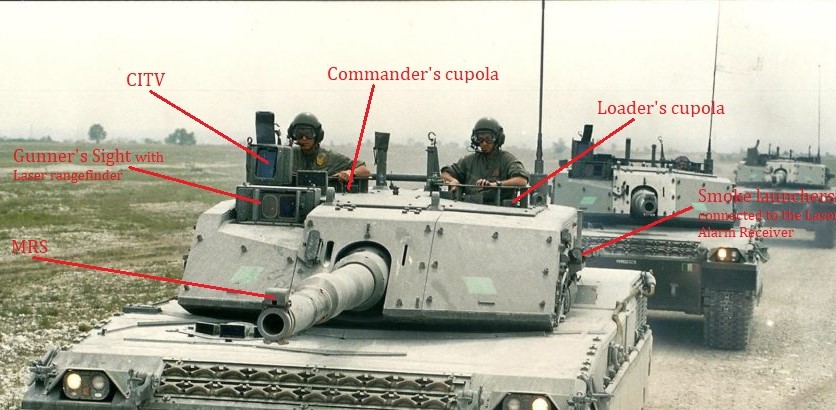
Protection
The vehicle appears to have ERA (Explosive Reactive Armor) on the side skirts, as on the T-14 Armata and composite spaced armor covering the front and side of the turret.
There are a total of 12 grenade launcher tubes on the lower sides of the turret, in groups of three, six frontal and six lateral.
These systems are probably a copy of the anti-missile subsystem of the Afghanit APS (Active Protection System) of Russian production mounted on the T-14 Armata and on the T-15 Heavy Infantry Fighting Vehicle (HIFV).
The Russian Afganit is composed of two subsystems, a generic one consisting of small charges mounted on the roof of the turret, covering a 360° arc, that shoot small fragmentation grenades against rockets and tank shells, and an anti-missile one consisting of 10 large fixed grenade launchers mounted (5 per side) on the lower part of the turret.
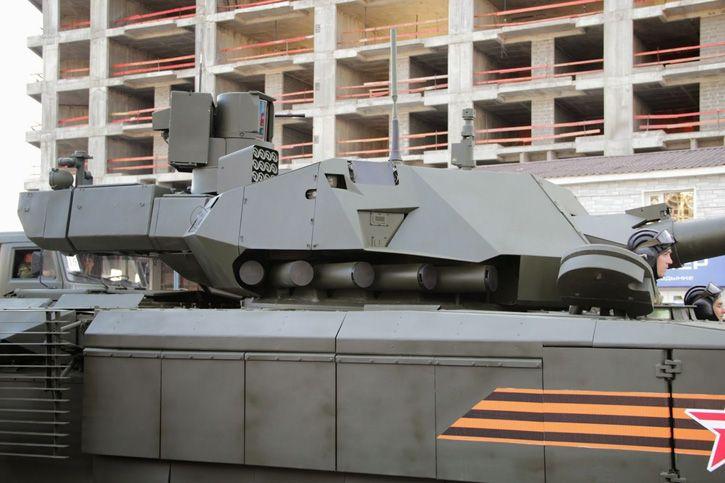
Connected to the twelve grenade launchers, there are at least four radars, probably of the Active Electronically Scanned Array (AESA) type. Two are mounted on the frontal composite armor and two on the sides. These are meant to detect incoming AT missiles aimed at the vehicle. If an AT missile is detected by the radars, the system automatically activates the APS that fires one or perhaps more grenades in the direction of the target.
There are also two devices mounted on the turret sides. These could be Laser Alarm Receivers used on the modern AFV or other sensors for the Active Protection System. If these are actually LARs, their purpose is to detect laser beams from enemy rangefinders mounted on tanks or AT weapons that are aiming at the vehicle and automatically activate the rear smoke grenades to hide the vehicle from the opposing optical systems.
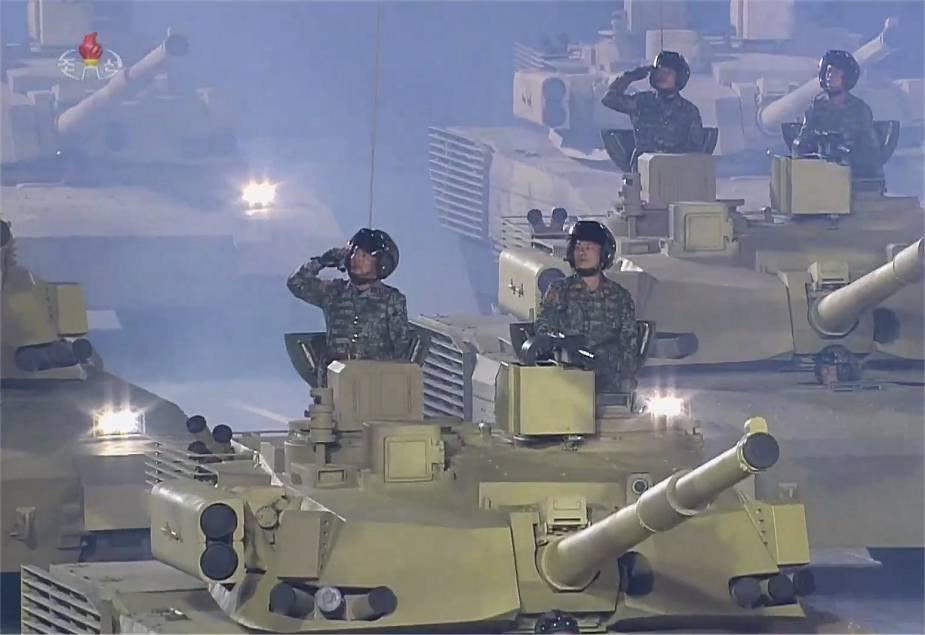
The Starving Tiger
Communist North Korea is one of the most peculiar countries in the world, with an army to match. The country, often called the Hermit Kingdom, is currently subject to almost worldwide sanctions due to its ongoing nuclear program and nuclear bomb tests. This has largely deprived the country not only of the economic benefits of trade but also of many resources required for tank construction, most importantly foreign weapons, weapon systems, and minerals which the country cannot extract from its limited resources.
While North Korea has found ways of circumventing these sanctions and engaging in limited trade (including selling weapons to foreign countries), the country has an annual GDP of only 18 billion dollars (2019), more than 100 times smaller than that of South Korea (2320 billion dollars in 2019). The GDP of North Korea is close to that of such war-torn countries as Syria (16.6 billion dollars, 2019), Afghanistan (20.5 billion dollars, 2019), and Yemen (26.6 billion dollars, 2019).
In terms of GDP per capita, the situation is similar. At $1,700 per person (Purchasing Power Parity, 2015), the country is overtaken by such powerhouses as Haiti ($1,800, 2017), Afghanistan ($2000, 2017), and Ethiopia ($2,200, 2017).
Nonetheless, despite these worrying economic indicators, North Korea spends a massive 23% of its GDP (2016) on defense, which amounts to $4 billion. This is closer to more developed countries, such as South Africa ($3.64 billion, 2018), Argentina ($4.14 billion, 2018), Chile ($5.57 billion, 2018), Romania ($4.61 billion, 2018), and Belgium ($4.96 billion, 2018). It must be noted that none of the countries listed in this comparison are capable of developing a brand new MBT able to compete with the most modern Russian and American tanks.
North Korea is a massive weapons manufacturer, proving able to build thousands of MBTs, APCs, SPGs, and many other weapon types. They have also made many improvements and adaptations of foreign designs. While it is clear that the North Korean versions are definite improvements over the originals, the originals are usually half a century old. No serious institution, except, of course, the North Korean propaganda machine, can claim that the North Korean vehicles are superior or even comparable to the most modern vehicles from other countries.
Furthermore, the North Korean electronics industry is not in a position to produce the expensive and technologically complicated electronics systems (and their associated software) needed by modern MBTs. Even the local production of LCD screens involves acquiring many components and parts directly from China and then assembling them in North Korea, if not buying them whole from China and just stamping them with North Korean logos.
Given all these factors, it is rather curious that the otherwise feeble North Korean economy and military industry could develop, design, and construct an MBT with comparable characteristics and systems as the most modern and powerful vehicles from the United States and Russia.
The Soviet Afghanit system which the New North Korean MBT is trying to emulate was based on decades of Soviet experience in the field starting from the late 1970’s Drozd and going through the 1990s Arena. Similarly, the first American MBT to field APS protection is the M1A2C from 2015, which uses the Israeli Trophy system which entered production in 2017. Given that the USA, the largest economy in the world and the largest military spender in the world, did not develop its own APS system, it is extremely unlikely that the North Koreans were able to do so and emulate a highly advanced system such as Afghanit. While there is a chance that North Korea might have acquired this system from Russia, there is nothing to indicate that the Russians would be willing to sell this highly advanced system, let alone to a pariah state such as North Korea. A more likely import source would be China, which also has locally developed hard-kill APS.
Similar arguments can be made for the New North Korean MBT’s Remote Weapons Station, Advanced Infrared Camera, advanced composite armor, and main sights. It is highly unlikely that North Korea was able to develop and build these systems on its own. This leaves only two possible options: either these systems were acquired from abroad, most likely from China, which does seem improbable nonetheless, or that they are simple fakes meant to deceive its enemies.
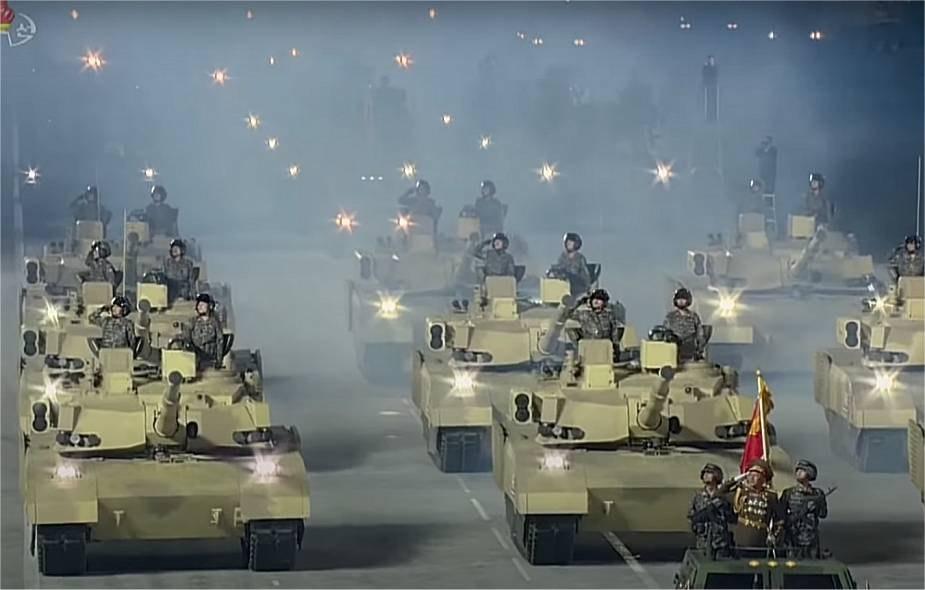
The Lying Tiger
As in most nationalist-communist countries, propaganda plays a very important role in the ongoing functioning and perpetuation of the North Korean regime. It is spearheaded by the cult of personality for the current leader, Kim Jong-un, and for his forefathers, Kim Jong-il and Kim Il-sung, and of Korean exceptionalism. North Korean propaganda makes full use of the full censorship of information from the outside to paint all the rest of the world as a barbaric and monstrous place, from which the North Koreans are sheltered by the ruling Kim family and the North Korean state.
While North Korean propaganda plays an important role in perpetuating the North Korean regime internally through the vilification of the rest of the world, constant lying about the achievements of North Korea, and some outright fantastic claims (such that North Korea is the second happiest country in the world), its annual military parades are becoming more and more targeted to the outside, projecting North Korea’s power and dangerousness to its enemies.
These military parades have become a nearly yearly occurrence under the new leader of North Korea, Kim Jong Un. Furthermore, they are broadcast live through the Korean Central Television, one of the state-owned broadcasters in North Korea. Furthermore, the television channel is broadcast for free outside North Korea’s borders. This is how the world found out so quickly about the new North Korean MBT presented in the 2020 parade.
However, this has allowed the military parades to become more than just an internal show of strength and military power. They are now also a way for North Korea to publicly broadcast its capabilities and intimidate any potential enemies.
What must be remembered at all times is that a military parade is not an accurate representation of the military power of a country nor of the capabilities of the vehicles presented. It is a show meant to present the army, its units, and its equipment in the best and most impressive light. The equipment presented does not have to be in use, fully developed, or even real to appear on a parade.
North Korea has a long history of being accused of presenting fake weapons on its parades. In 2012, a team of German military experts claimed that the North Korean KN-08 ICBMs presented at a parade in Pyongyang were just mock-ups. They also mentioned that the Musudan and Nodong missiles presented in a 2010 parade were just mock-ups and not the real thing.
Similar accusations emerged in 2017 from former military intelligence officer Michael Pregend, who claimed the North Korean equipment presented during a parade that year was unfit for combat, highlighting the AK-47 rifles with attached grenade launchers.
However, the fact of the matter is that it can not be proven either way. There is no way for actual military researchers to get access to North Korean technology and the North Koreans refuse to publicly release any information on their equipment. With parades being the only way to get a look at the newest North Korean military technology, it must be kept in mind that there is no guarantee that the systems shown are operational or fully developed or that they have all the capabilities that are presented. The information that can be gleaned from a parade is superficial, with most details that are crucial to understanding the capabilities of a modern weapon system being either inaccessible or obscured.
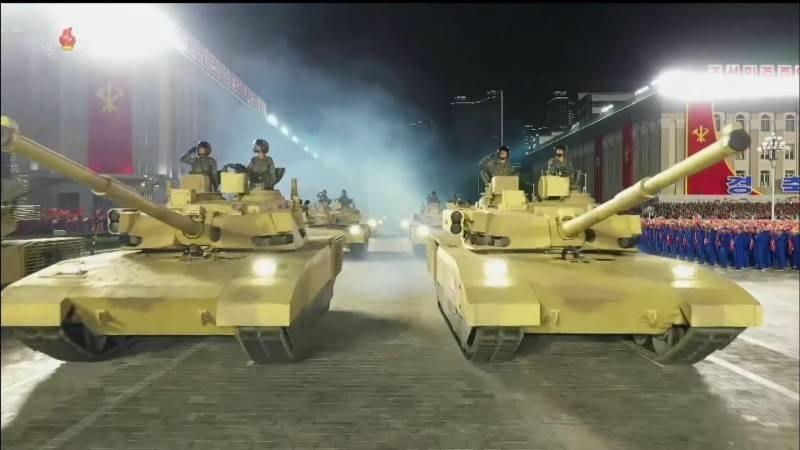
Recent Appearences
On 25th April 2022, North Korean leader Kim Il-sung organized a parade for the 90th anniversary of the foundation of the Korean People’s Army. Other have pointed out that it was also to celebrate the 100th birthday of Kim Il-sung, founder of the nation. At the parade, the 8 pre series M2020 appeared for the fourth official time.
Externally they were unmodified. It is possible that some of the expected development and modifications have been delayed by the Covid-19 pandemic and its financial impact, in spite of the regime’s best efforts to prevent the virus entering the country and stopping its spread. Similarly, development and modifications may have been affected by the main focus missile tests over the last two years.
In the period of January to April 2022 alone, North Korea has launch tested 20 missiles.
However, they had a new three tone drown, dark green, and light green spots camouflage, more suitable for the North Korean terrain than the original yellow camouflage. Hwasŏng-17 missiles, already seen in the 2020 parade and which recently completed a successful launch test on 24th March 2022, were also at the parade.

Conclusion
As with all new North Korean vehicles, it was immediately assumed that the vehicle was a fake to arouse astonishment and confuse Western analysts and armies. According to some, this is actually a Songun-Ho modified to fit new tracks and a seventh wheel in the running gear, but with a dummy superstructure.
Others claim it really is a vehicle of a new conception, but with the more advanced systems being fakes, either to deceive or to act as stand-ins until the real things are developed, like the remote weapon turret with a grenade launcher, the APS and its radars. In fact, these systems would be a big upgrade for North Korea, which has never showcased anything like this before.
With the entry into service in 2014 of the K2 Black Panther, North Korea also had to present a new vehicle that would be able to cope with the new South Korean MBT.
It could therefore be a mock-up to “scare” their southern brothers and show the world that they can militarily match more developed NATO armies.
The vehicle presented by Kim Jong-un, the supreme leader of North Korea, seems like a very modern and technologically advanced vehicle. If Western analysts are not mistaken, it will be able to effectively confront, in a hypothetical conflict against NATO nations, the most modern Western vehicles.
Its profile is completely different from previous North Korean vehicles, showing that even North Korea, perhaps with the help of the People’s Republic of China, is able to develop and build a modern MBT.
However, it must be considered that, no matter how advanced the vehicle may be, North Korea will never be able to produce enough of them to be a threat to world security. The real threat from North Korea comes from its nuclear weapons and its vast conventional arsenal of artillery and missiles. The new tanks will be used as a deterrent against a possible South Korean attack.
A detail not to be underestimated is that the nine models presented on 10th October 2020 are probably pre-series models and that, in the coming months, production vehicles should be expected if this vehicle is really meant to see service.
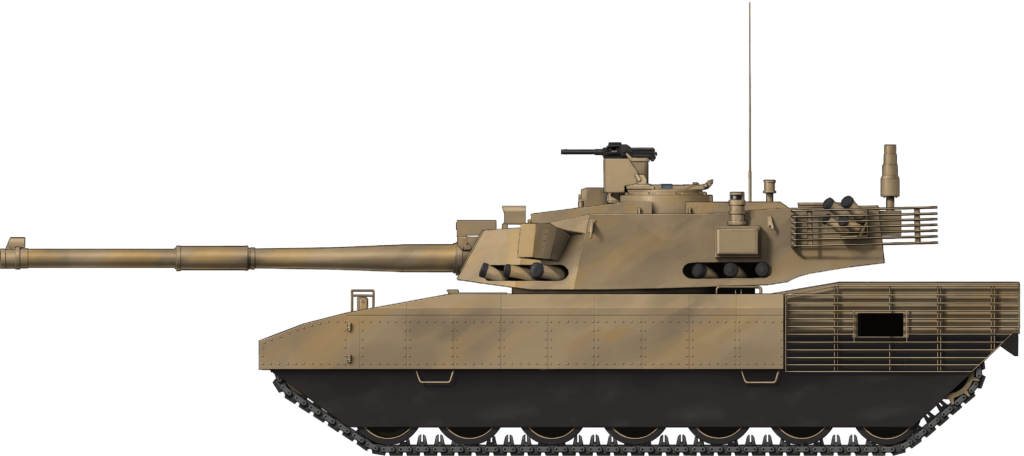
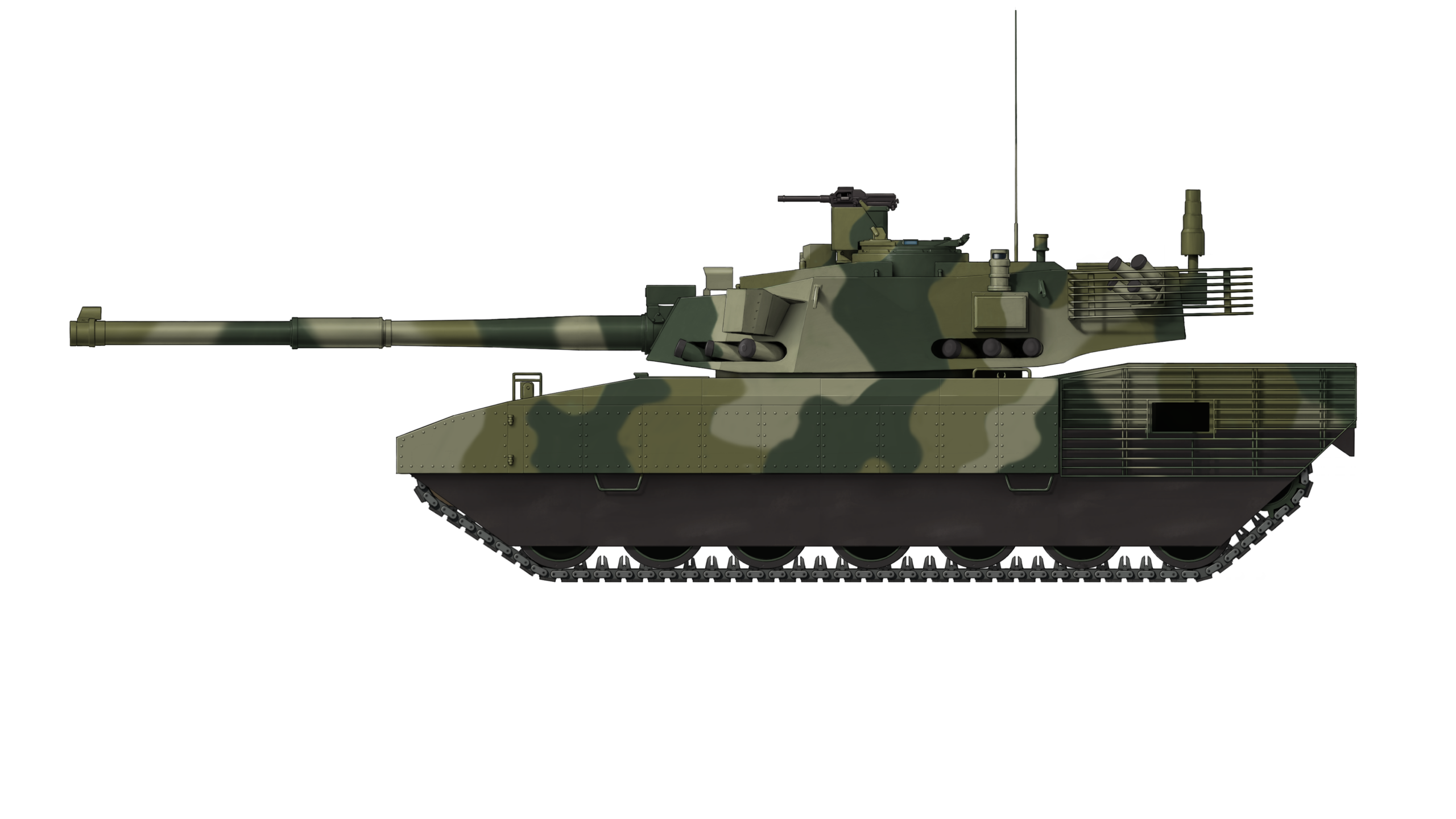
Sources
Stijn Mitzer and Joost Oliemans – The Armed Forces of North Korea: On the Path of Songun
topwar.ru
armyrecognition.com
https://www.youtube.com/watch?v=w8dZl9f3faY
https://www.youtube.com/watch?v=MupWgfJWqrA
https://en.wikipedia.org/wiki/Sanctions_against_North_Korea#Evasion_of_sanctions
https://tradingeconomics.com/north-korea/gdp#:~:text=GDP%20in%20North%20Korea%20averaged,statistics%2C%20economic%20calendar%20and%20news.
https://en.wikipedia.org/wiki/List_of_countries_by_GDP_(nominal)
https://www.reuters.com/article/us-southkorea-military-analysis-idUSKCN1VW03C
https://www.sipri.org/sites/default/files/Data%20for%20all%20countries%20from%201988%E2%80%932018%20in%20constant%20%282017%29%20USD%20%28pdf%29.pdf
https://www.popsci.com/china-has-fleet-new-armor-vehicles/
https://www.northkoreatech.org/2018/01/13/a-look-inside-the-potonggang-electronics-factory/
https://www.aljazeera.com/news/2020/10/9/north-korea-to-show-strength-and-defiance-with-military-parade

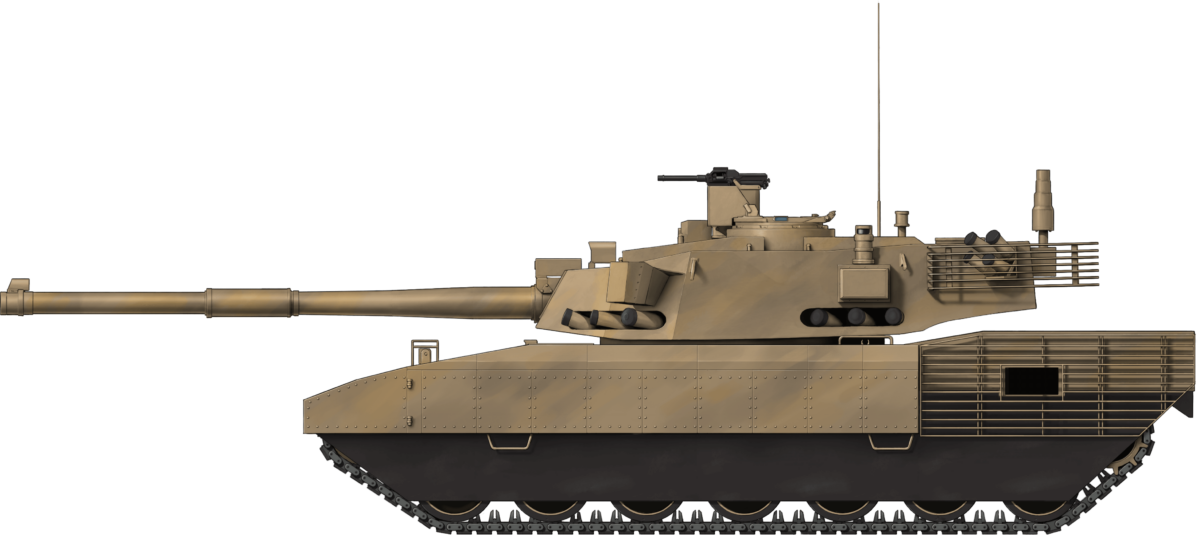
31 replies on “M2020, New North Korean MBT”
50% of the Article – another web-guessing on Tank.
50% – vilifying DPRK.
Please, do not raise the Discussion of Politics on this beautuful and unique Tank Encyclopedia.
Ok, no politics. But the tanks in those pictures look so fake… i don’t know if it’s the light or the poor resolution, but they just look like cardboard glued over another tank model.
Well, there are foam-plastic-armored Tanks in other countries, e.g. polish PL-01. It’s not Kim Jong Un’s unique creation. I am not protecting him, just trying to be objective.
Well, PL-01 was officially presented as a prototype/concept, unlike this. And I am also objective when I say this looks fake. I have no preference one way or another.
Also, the cap on the barrels seems off. So I googled tank parade images, and not once did i see covers over the guns.
NorK shill lol
So much plywood on those tanks….LOL
This tank should be filed under “Fake Tank”
I also doubt this tank is real. Well at least the hull is real lol
But I think we should give those tank “Not guilty until proven otherwise” category aka 50:50, because no one outside NK know any details of those tanks.
It could be real, or partial mockup with some working systems, or just mere accessories over existing tanks.
Ha Ha, fair enough. The hull is indeed real 🙂
Haha, remember when they use to say Kim’s missiles and nukes were also fake? Well, this 2021 and they are very real.
It really looks like an copy of the T-14. I don’t know why. They might have had one or two real, but the rest of them had to have been fake.
A nation which produces nuclear intercontinental ballistic missiles should not be dismissed as easily as that. Remember how we all laughed at USSR not being able to make anything only to later discover that is armored vehicles are most advanced in the world?
It is amazing that humans can achieve if they are determined enough. I do not find it hard to believe that over the years North Korea had stolen, purchased and otherwise created technologies necessary to produce these tanks. They might not function properly, they might not even be done yet. However, it would be foolish to dismiss them out of hand as fakes without solid evidence for it.
Time will prove either side wrong, lets not speculate blindly over that might or not might be. That is merely nothing more than throwing baseless opinions and prejudices around.
The USSR was indeed able to crank out tanks, true.
But lest we forget, the nations within the Soviet collective were mostly industrialized and had decades of experience producing vehicles, military or otherwise. The entire Korean Peninsula pre-Second World War was nowhere near that, even under Japanese rule.
The DPRK as it currently stands has nothing to offer other nations. Their money is worthless, their people are starved, and their exports hardly exist. There is no force on this planet or elsewhere that would ever truly aid or enable the North to develop a truly modern and operational MBT system. China would much rather keep them in the dark; as would Russia.
There is no proof of this particular vehicle ever doing more than driving in a straight line, let alone even firing a single round. The higher brass within their military is quick to show absolutely everything at least shooting on their controlled television stations, and we haven’t even got that yet.
Until then, this thing should be considered beyond a reasonable doubt an absolute non-threat, and even more so an elaborate parade float.
Further. Let’s assume they have such tanks. How many can they build? 10? 100? My guess would be , not enough to make a difference, in a full scale war.
I really recommend watching the actual parade footage. The guns bounce quite a bit, some of the wheels (which they tried to cover up) do not match at all, and their military is set up more infantry based. Take a long look at these and tell me how big a crew they would have. If it’s less than 6, you gotta be crazy.
1) Those guns bounce due to small changes in terrain. If you would watch Russian parade, their tanks seemingly has same effect;
2) I watched their wheels, they all are matching.
1) Soviet Union was not industrialized. It underwent drastic and chaotic rapid industralization.
2) Any economy has something to offer others. Go and investigate what N.Korea is exporting.
3) Did you saw T-14 doing anything more than participate in parade? What about Leopard 2A7? Both of those tanks are also just parade floats by that logic.
I believe this is actually quite a healthy debate, good show.
1) (on your first point) The barrels not only slightly depressed as you say, they also flexed a fair bit as if they were bent like a pencil between two hands, like something not entirely made of even the most mild of steel.
2) (again, first set) There is a particular shot from almost the very front of the tanks in which they are not consistent in color, almost as if it was from an -older model tank- *cough old Chinese tanks*
Now back to your second first point, otherwise known as “1)”, the Soviet Union as a whole was able to produce tanks that were not lend lease starting in 1928 with the T 18 light tank, while Korea wasn’t even making civilian cars until the 1950s, and even then they were from foreign sources.
Other 2) North Korea’s exports are all very close to making equal percentages of the export total, which again, small and very under developed nation just means they care less about regulatory standards and that’s really the only thing anyone abroad would seem to really care about. The DPRK makes textiles out of literal rock, for crying out loud; they just lack actual material and means.
Onto the first original here
3) I personally did “saw” the T 14 on parade, and I very honestly in my personal opinion believe it only served to show that Russia was and is indeed building up that particular model. The fact that one of them stopped abruptly in the middle of said parade just further proves the point that it is not ready, but definitely having the kinks worked out of it. As it goes, of course, several military leaders have said they just prefer to stop developing it and keep updating the T-72s, I’m sure it’s still being worked on.
As for the upgraded Leopard, as far as I know, they already are on contract to sell and adhere to NATO rules and regs, making it’s development and proof of the concept much more transparent.
“most advanced Armoured vehicles”🤔😂🤣😂🤣😂🤣(see Ukraine)
I had this feeling that this tank is well… sucks… like a fish got out of the water and can’t do anything because it doesn’t know how to go back in. And why does the turret looks like the abrams? I but it’s only 500-600mm of armor for the turret (not enough these days since armor goes up from 700-1000mm). Hull is not that goodly protected my guess is 400-600? Either we’ll see how it goes. Either smoothly like a cake… Or see’s it goes down like a stock market crash.
I know it looks like the abrams but the armor sucks.
I forgot to add that part in sorry! :/
It is indeed unlikely that Russia would sell their advanced Afghanit system to North Korea. If and when they sell it, it’ll be to nations that actually have money to pay for it.
And North Korea doesn’t have the technology base to independently develop a comparable APS.
We can’t however discount that North Korea might’ve managed to STEAL the design. Espionage is something they’re capable of.
Interesting to see the comment.
Chinese observers have come to a somewhat questionable conclusion that, the new “M-2020″tank could be a modified Songun-915 tank with a new hull design.
I couldn’t agree with Ernestas’ words that a country which could design its own nuclear weapons and ballistic missiles should have the ability to produce their own tanks. While it is easy for people to consider DPRK tanks as copies or even fake ones, please at least respect the researchers’ effort of developing DPRK T-62 modifications and eventually tanks of their own styles.
It’s a rather interesting act of finding some foreign “fathers” for the weapons of China and DPRK. Despite its great humiliation, such act is usually barely reasonable. For example, the hull (especially the V-shaped wave board) of ZTZ-99 mod.99 looks very similar to that of T-72, but the ZTZ-99 is an entirely different design except from the autoloader. Also, the VK.30.01D prototype of Nazi Germany looks just like the T-34, but they are also quite different from each other. And another example is the Chinese ZBL-08 family which might be considered as a Chinese copy of the US Strylker, but is in fact a derivative of the BK1990.
Last but not least, as you, the Tanks-encyclopedia, have framed yourself as an online tank museum to provide accurate and objective information, you should NEVER post such articles like this one containing great bias and political ideology. It is interesting to see your use of double-standard, a shameless trick frequently used by your government.
“you government”
Whose government? Are you claiming the Online Tank Museum purports to be under the authority of a government?
“I couldn’t agree with Ernestas’ words that a country which could design its own nuclear weapons and ballistic missiles should have the ability to produce their own tanks.”
I couldn’t agree with them either, since the DPRK did not, in fact, develop these things on its own. To suggest otherwise would be only echoing their own, unverified claims—which were backed with, among other things, footage taken from VIDEO GAMES.
It doesn’t matter what you think about North Korea, this tank can be considered as a leap forward for the Korean tank industry – certainly, compared to the Chonma-Ho.
However, I agree with the argument that they may be a derivative of the earlier Songun-Ho. If you review the video of their “Self-Reliance 2021” exhibit, some shots have shown that the square outer shell is actually welded around a domed cast turret on the inside.
And if you reread the article about Songun-Ho (it’s also on this web), the author mentioned that the cast dome turret has a weakness that it is difficult to equip composite armor due to its curved shape. If so, then the M-2020 could be the answer of North Korean engineers to that problem: they have difficulty making a turret that is both large and provides the required protection, so they built a domed turret as the inner core (which they were more adept at making), then welded around it composite armor plates. Might be a good solution given their current level, albeit a bit roundabout :V
It is quite difficult to judge the tank’ electronics. But I believe that even if the North Koreans can’t research them on their own, it’s still quite possible that they learn/steal from countries that are capable of electronic technology, like China, Russia or even Iran. They may not be among the most advanced, not scoring a perfect 10, but even a score of 7 or 8 is enough to be considered a threat to consider.
I just want to say, you have the same name as me
The tanks just seem off. The way the light reflects off the tank at night. Almost like plastic, seems like a tank that country presents to scare others, but it never actually performs in combat. See Germany World War 2.
The author of the article should update more on this article. What we thought was a fake APS turned out to be real. Something that works.
A comprehensive update has been submitted internally for checking.
A comprehensive update is in the works.
Thanks
Gareth (TE Manager)
Just trying to guess the size and proportions of the vehicle, but it is hard because I can’t see components in common with other known tanks to make proportions.
I see that the profiles in this page are drawn with the lateral bolted plates appearing more high than long; my perception from photos is that these panels have to be somewhat longer than their height. So, I would suggest that the profiles could be made more accurate by reproportioning them with a longer hull.